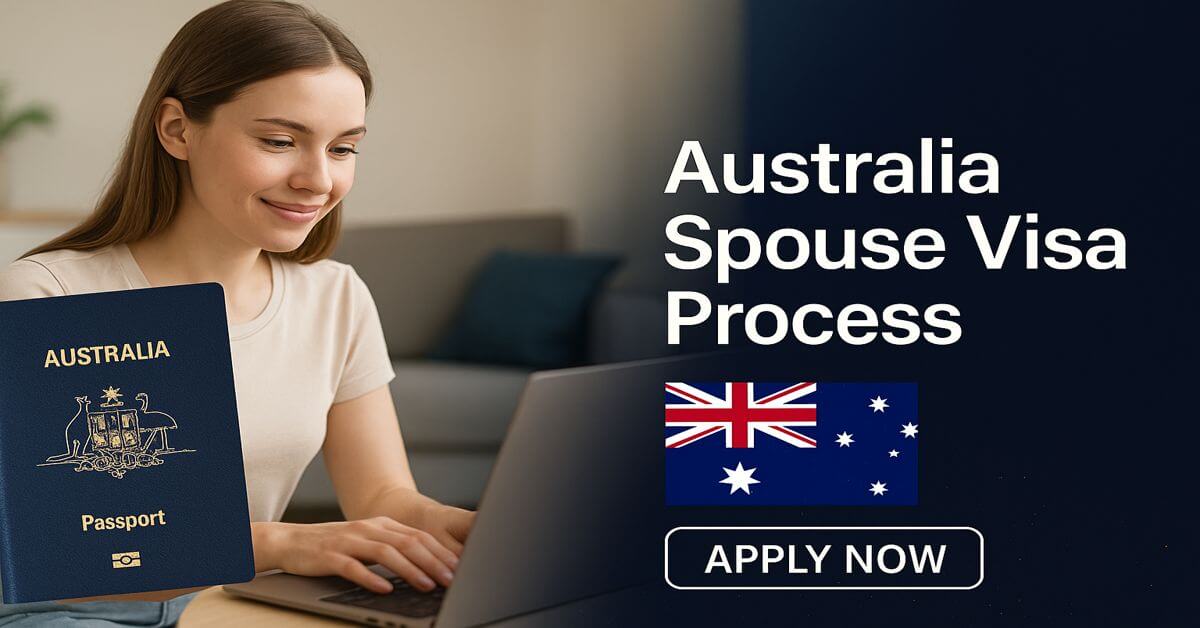For those in a veritable relationship with an Australian citizen, permanent resident, or eligible New Zealand citizen, the Australia Partner Visa provides a pathway to reunite and live together in Australia. It is part of the family migration stream and offers both temporary and permanent residency options, eventually leading to Australian citizenship.
This guide explains the visa types, eligibility criteria, required documents, application steps, and frequently asked questions to help you navigate the process confidently.
Types of Partner Visas in Australia:
1. Subclass 820 and 801 (Onshore Application)
- Subclass 820: Temporary partner visa for applicants already in Australia.
- Subclass 801: Permanent partner visa granted approximately two years after the 820 visa, if the relationship remains genuine.
2. Subclass 309 and 100 (Offshore Application)
- Subclass 309: Temporary visa for applicants outside Australia.
- Subclass 100: Permanent visa granted approximately two years later, similar to Subclass 801.
Eligibility Criteria:
To qualify for a partner visa in 2026:
- Genuine Relationship: Must demonstrate a real, continuing relationship.
- Sponsorship: Your partner must sponsor you and meet character requirements.
- Age Requirement: Both partners must be at least 18 years old.
- Married or De Facto: Must be legally married or in a de facto relationship (at least 12 months of cohabitation).
- Health and Character: Medical exams and police clearances are mandatory.
- Sponsorship History: Sponsors must not have sponsored another partner within the past 5 years (some exceptions apply).
Check Also: All Types of Visas in Australia – Application Guide
Required Documents:
Personal Documents
- Passports (applicant and sponsor)
- Birth certificates
- Passport-sized photos
Relationship Evidence
- Marriage certificate or proof of de facto relationship
- Joint financial records (bank accounts, utility bills)
- Evidence of cohabitation (rental agreements, shared addresses)
- Communication history (emails, messages, call logs)
- Statutory declarations from friends and family
Health and Character Documents
- Medical examinations from authorized clinics
- Police clearance from countries lived in for 12+ months
Application Process of Australia Spouse Visa Process 2026:
Step 1: Gather Documents
Collect identity, relationship, health, and character documents.
Step 2: Create an ImmiAccount
Register at immi.homeaffairs.gov.au to lodge your application online.
Step 3: Complete the Application
Choose the appropriate subclass (820/801 or 309/100) depending on your location.
Step 4: Pay the Visa Fee
As of 2026, the fee exceeds AUD 8,000 (covers both visa stages). Payment is required upfront.
Step 5: Upload Supporting Documents
Attach all necessary documents through your ImmiAccount. All documents must be clear and in English (translated if necessary).
Step 6: Submit Sponsor Application
Your partner must complete a separate sponsorship application and upload required documents.
Step 7: Health & Police Checks
Complete medical exams and obtain police clearances as instructed by the Department of Home Affairs.
Step 8: Wait for Processing
Temporary visa processing typically takes 12–24 months. Once approved, you can live in Australia while awaiting permanent residency.
Step 9: Permanent Residency (801/100)
Two years after initial application, you’ll be assessed for permanent residency. You must continue to provide updated relationship evidence.
Benefits:
1. Pathway to Permanent Residency
Successful applicants gain a clear path to Australian permanent residency, and eventually citizenship.
2. Work and Study Rights
You can work full-time and study in Australia with no restrictions while holding a temporary or permanent partner visa.
3. Access to Medicare
Temporary partner visa holders are eligible for Australia’s public healthcare system (Medicare).
4. Include Family Members
You can include dependent children in your application, allowing them to also live, study, and access healthcare in Australia.
5. Live with Your Partner in Australia
You can live, travel, and work in Australia with your partner, strengthening your relationship in a shared environment.
6. No Sponsorship Limits for Citizens
Unlike some visa categories, Australian citizens can sponsor their partner even if they’ve sponsored someone before, subject to character and financial history.
7. Eligible for Citizenship
After holding a permanent partner visa for a period (typically 4 years total residency with 1 year PR), you may become eligible for Australian citizenship.
8. Freedom to Travel
The temporary visa allows multiple entries into and out of Australia while it is valid.
Common Reasons for Refusal:
- Inadequate relationship evidence
- Discrepancies or false information
- Health or character issues
- Incorrect subclass application
- Sponsor’s prior visa or sponsorship violations
Tips to Improve Application Success:
- Be Honest: Provide truthful and consistent information
- Detailed Evidence: Use multiple forms of relationship proof, not just photos
- Stay Organized: Maintain a timeline and records of your relationship activities
- Respond Promptly: Quickly address any requests from immigration
- Notify Changes: Update immigration if your contact, relationship, or address changes
Conclusion:
Applying for an Australia Partner Visa in 2026 involves thorough preparation, ongoing documentation, and commitment to a genuine relationship. Though it may take time, this visa offers a valuable path to permanent residency, full work and healthcare rights, and eventual citizenship. With proper planning and strong relationship evidence, many applicants successfully reunite with their partners and begin a new life in Australia.
Frequently Asked Questions:
Can I apply if I just got married?
Yes, but you must provide substantial relationship evidence to support the application.
What if the relationship ends during processing?
Your visa may be refused or canceled unless you qualify under exceptions such as domestic violence.
Can I include my children in the application?
Yes, dependent children can be included.

